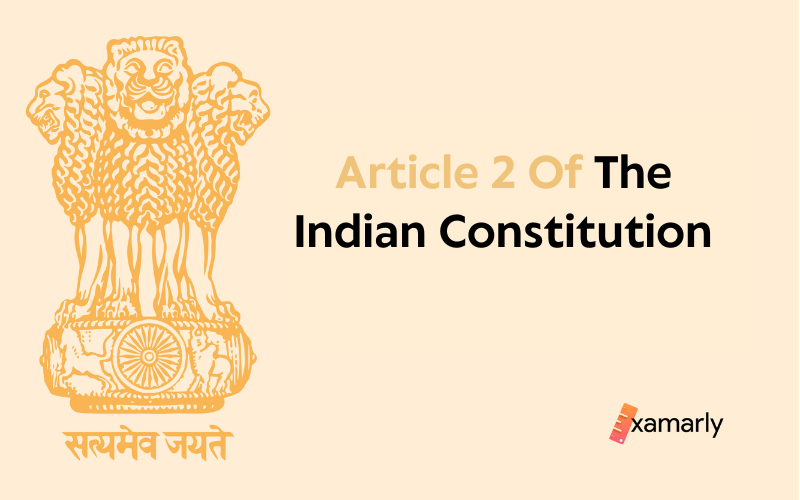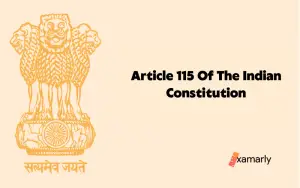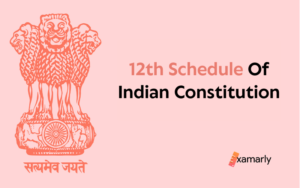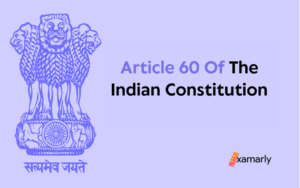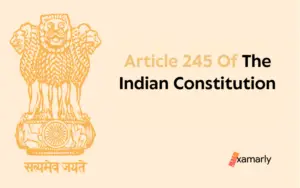With 448 articles divided into 25 parts and 12 scheduled, India has the largest Constitution. Additionally, it has 105 amendments. The Indian Constitution is the most powerful text in the Union of India. It was drafted by the Constituent Assembly from 1946 to 1950. The Constitution became operative on 26 January 1950. Article 2 of the Indian Constitution is a fundamental clause that defines the establishment of states.
Here, you will learn about Article 2 of the Indian constitution. You will also learn about the powers of the power of the parliament to change the territorial boundaries of states. Read on to know more about its related debates. This article is a part of the Indian Polity of UPSC Syllabus of the IAS Exam.
Article 2 Of The Indian Constitution
Article 2 of the Indian Constitution states that Parliament may by law establish new States or admit new States into the Union on such terms and conditions as it thinks fit.
Explanation
Article 2 of the constitution gives the parliament the authority to create new states. The Parliament has the power to admit or create new States under the authority granted to it. By using this authority, Parliament has acknowledged various French settlements, including Pondicherry, Karaikal, and others.
Admission And Establishment Of New States
Articles 2, 3, and 4 of the Indian Constitution refer to the creation of new States in India. According to Article 2 of the Indian Constitution, the Indian Parliament has the sole authority to admit or establish new states into the Indian Union under any terms and conditions it sees fit. The State legislatures lack the authority to create laws on this topic because this power belongs exclusively to the Indian Parliament. A 1993 Supreme Court ruling clarified that Article 2 does not grant Parliament unlimited power. There are checks and balances on this power. Parliament can only create a new state if the President and the state legislature agree.
Parliament’s Power Under Article 2
Article 2 gives the power to admit or establish new states that were not previously a part of India. However, this power does not apply to the creation of new union territories. This can be performed only after passing a constitutional amendment under Article 368.
This power extends to expanding or decreasing the size of any state, renaming it, and modifying its borders. Article 4 clarifies that the admission of a new state can be accomplished with a simple majority. It does not require an amendment in accordance with Article 368.
Constituent Assembly Debate on Article 2
The need for Article 2 seemed clear to the Constituent Assembly as there was a need for a centralized authority to hold the country’s administrative structure together and keep it from falling apart due to its size and diversity.
According to one member, a clear definition of “State” is necessary to ensure that the Constitution is interpreted consistently. He argued that the word “state” is used carelessly in a variety of ways in the Draft Constitution as it is currently written. However, “State” must always be understood to mean “a kind of sovereignty.” He suggested sticking with outdated terminology like “Provinces, Indian States, and Chief Commissioners’ Provinces.”
Assembly Member Naziruddin Ahmad was of the opinion that Articles 2 and 3 should be combined because they substantially overlap. He suggested that Article 2 be used in place of Articles 2 and 3. Assembly Member H.V. Kamath suggested changing the word “Parliament” in Article 2 to the phrase “Parliament of Union” for clarification.
Note: Check out the linked articles to learn more about the Indian Articles, amendments, and other important articles for UPSC preparation.
The Proposed Change In Article 2
All of these changes were rejected. Draft Article 2 was incorporated into the Constitution as it is.
What Are The Distinctive Features Of Articles 2 And 3?
The difference between Articles 2 and 3 of the Indian constitution is that the former deals with acquiring new territory or establishing a new state. The latter talks about altering the boundaries of existing states. These articles are often confused with one another, but there is a crucial difference between them.
Article 2 deals with the admission of already existing states along with establishing states that did not previously exist. Article 3 provides more details on the authorities and powers in terms of the formation of new states (by adjoining or separation of territory ) and altering the boundaries and names of any state.
When comparing these provisions, it is clear that Article 2 addresses the admission or creation of a new state from outside the Indian Territory. While Article 3 grants the authority to form a new state from an existing one, it also gives the parliament certain powers to alter the territorial boundaries of such states.
Controversy Of Sikkim
These powers of the parliament were used to admit Portuguese and French settlements to the union, as well as to create new states following a reorganization of existing states. However, there is some controversy over the exact meaning of this clause.
Article 2 gives the Parliament the authority to admit a new state. However, the Government attempted to introduce the concept of ‘associated state’ through the 35th amendment. Previously, there was no mention of this concept in the Constitution. Sikkim was supposed to be a part of the Indian Union. It would not, however, be considered Indian Territory.
Sikkim was added to the Union by Parliament via the 36th Amendment Act 1975. Thus, the criticism of Sikkim faded. Article 2A was repealed, Article 371F was added, and the first and fourth schedules were amended. On April 26, 1975, Sikkim became India’s 22nd state.
Conclusion
The cornerstone of the Constitution is Part I, which gives out a framework for the newly formed states. Article 2 of the Indian Constitution is crucial to the formation of new states under the Indian government. It also mentions the power of Parliament with respect to such actions.
There are provisions for the discretion of parliament. The judiciary over time has examined the parameters of such discretion, nevertheless, and made appropriate rulings. Thus, the constitutional architecture is protected by this mechanism of checks and balances.
It is one of the must-know articles within the list of articles of the Indian Constitution. Further, having a thorough knowledge of this will help you further understand the purposes of Articles 3 and 4 of the Indian Constitution.
FAQs
What Does Article 2 Deal With?
According to the Indian Constitutional Statement, the Parliament may practice establishing a new state under whichever terms and circumstances it deems appropriate for the new state.
Which Part Of The Indian Constitution Contains Article 2?
Four articles, from 1 to 4, make up Part I. Thus, article 2 is also a part of Part I. Part I is a compilation of laws pertaining to the Indian Constitution that speaks about the Union States and its territories.
What Power Does The Parliament Have Through Article 2?
Article 2 of the Indian Constitution endows the Parliament with powers regarding the addition of new states into the Union of India.
When Was The Article 2 Draft Submitted?
On November 5th, 1948, the draught of Article 2 was presented to the Parliament. The daft has been submitted in accordance with the constitution act of 1975.
How Does The Parliament Exercise Its Authority To Create And Admit A New State?
The size of a state may be increased or decreased by the Parliament. The state’s borders can be changed by the Parliament.
Sikkim Was Added By Which Amendment?
Sikkim was added to Indian Union by Constitutional Amendment Act 1975. It became the 22nd state.


